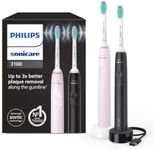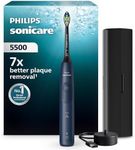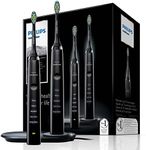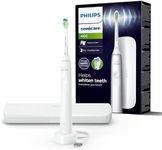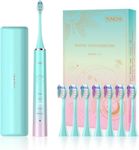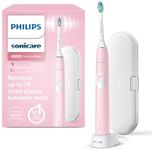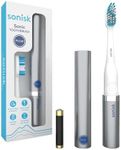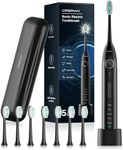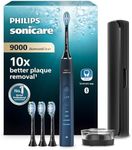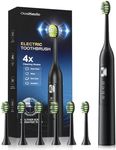Buying Guide for the Best Battery Toothbrushes
When choosing a battery toothbrush, it's important to consider your personal dental care needs and preferences. Battery toothbrushes can offer a more thorough cleaning compared to manual brushes, and they often come with features that can enhance your brushing experience. Understanding the key specifications will help you select a toothbrush that fits your lifestyle and oral health requirements.Bristle TypeBristle type is crucial because it affects how the toothbrush cleans your teeth and gums. Soft bristles are generally recommended by dentists as they are gentle on the gums and effective at removing plaque. Medium and hard bristles can be too abrasive and may cause gum irritation or enamel wear. If you have sensitive gums or teeth, opt for soft bristles. For those without sensitivity issues, medium bristles might be suitable, but always consult with your dentist if unsure.
Brush Head SizeThe size of the brush head determines how easily you can maneuver the toothbrush in your mouth. Smaller brush heads can reach difficult areas like the back of your mouth and are ideal for people with smaller mouths or those who prefer precision cleaning. Larger brush heads cover more surface area and can be more efficient for quick cleaning. Choose a size that feels comfortable and allows you to reach all areas of your mouth effectively.
Battery TypeBattery type affects the convenience and cost of using your toothbrush. Some toothbrushes use replaceable AA or AAA batteries, which are easy to find and replace but can add up in cost over time. Others have built-in rechargeable batteries, which are more environmentally friendly and cost-effective in the long run. Consider how often you want to replace batteries and whether you have access to charging facilities when choosing between these options.
Battery LifeBattery life indicates how long the toothbrush can operate before needing a recharge or battery replacement. Longer battery life is convenient for travel and reduces the frequency of recharging or replacing batteries. If you travel frequently or prefer not to charge your toothbrush often, look for models with longer battery life. For home use, shorter battery life may be acceptable if you have easy access to charging.
Cleaning ModesCleaning modes offer different brushing experiences and can cater to specific dental needs. Common modes include daily clean, sensitive, whitening, and gum care. If you have specific dental concerns, such as sensitivity or a desire for whiter teeth, look for a toothbrush with modes that address these needs. For general use, a basic daily clean mode may suffice.
TimerA timer helps ensure you brush for the dentist-recommended two minutes. Some toothbrushes have built-in timers that alert you when it's time to switch areas or when the full two minutes are up. This feature is particularly useful for those who struggle to brush for the correct amount of time. If you want to improve your brushing habits, a toothbrush with a timer can be a helpful tool.
Pressure SensorA pressure sensor alerts you if you're brushing too hard, which can prevent gum damage and enamel wear. This feature is beneficial for those who tend to apply too much pressure while brushing. If you're unsure about your brushing technique or have been advised by a dentist to be gentler, a toothbrush with a pressure sensor can help you maintain a safe brushing pressure.
